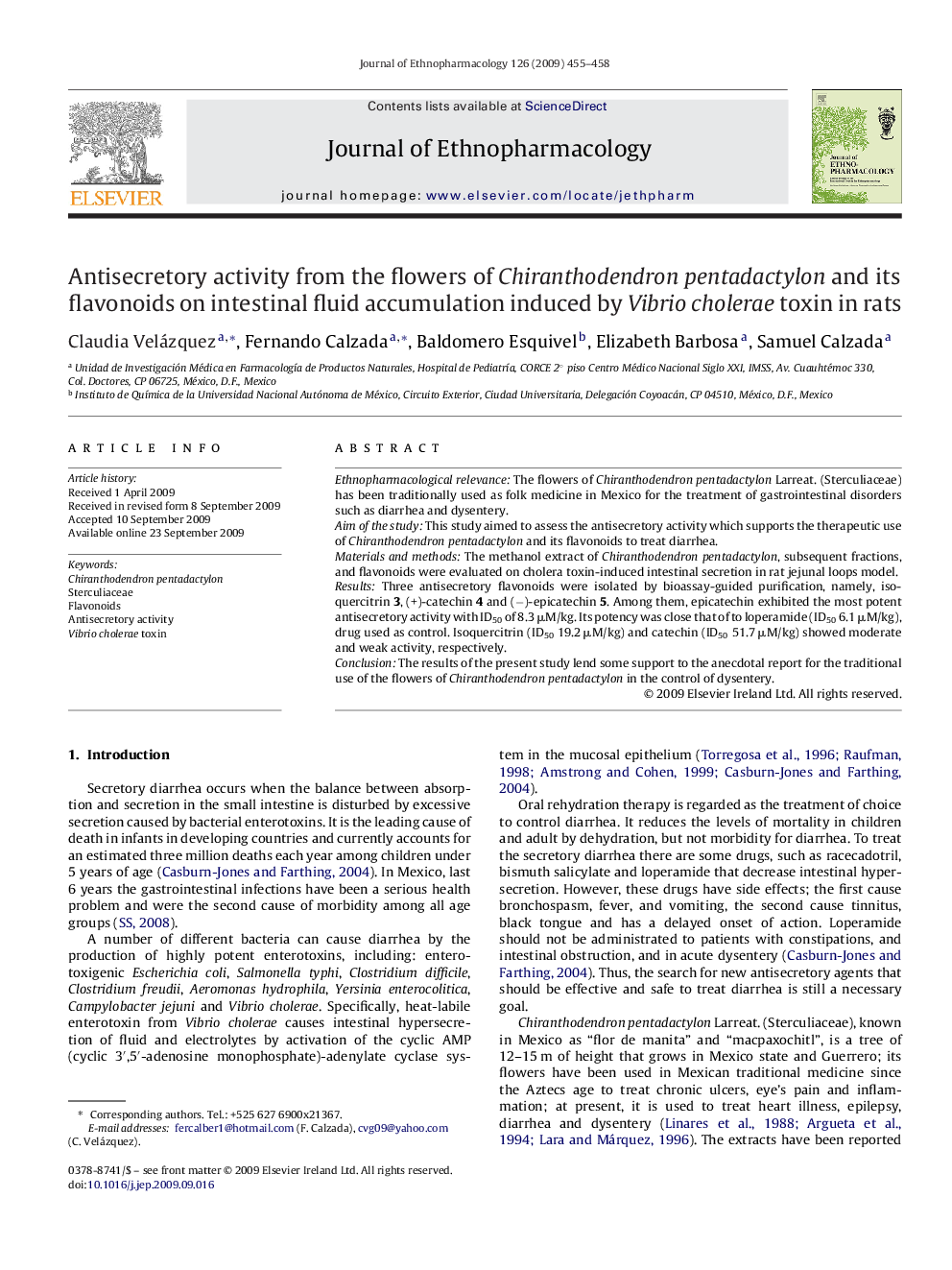| Article ID | Journal | Published Year | Pages | File Type |
|---|---|---|---|---|
| 2546463 | Journal of Ethnopharmacology | 2009 | 4 Pages |
Ethnopharmacological relevanceThe flowers of Chiranthodendron pentadactylon Larreat. (Sterculiaceae) has been traditionally used as folk medicine in Mexico for the treatment of gastrointestinal disorders such as diarrhea and dysentery.Aim of the studyThis study aimed to assess the antisecretory activity which supports the therapeutic use of Chiranthodendron pentadactylon and its flavonoids to treat diarrhea.Materials and methodsThe methanol extract of Chiranthodendron pentadactylon, subsequent fractions, and flavonoids were evaluated on cholera toxin-induced intestinal secretion in rat jejunal loops model.ResultsThree antisecretory flavonoids were isolated by bioassay-guided purification, namely, isoquercitrin 3, (+)-catechin 4 and (−)-epicatechin 5. Among them, epicatechin exhibited the most potent antisecretory activity with ID50 of 8.3 μM/kg. Its potency was close that of to loperamide (ID50 6.1 μM/kg), drug used as control. Isoquercitrin (ID50 19.2 μM/kg) and catechin (ID50 51.7 μM/kg) showed moderate and weak activity, respectively.ConclusionThe results of the present study lend some support to the anecdotal report for the traditional use of the flowers of Chiranthodendron pentadactylon in the control of dysentery.
Graphical abstractBioassay-guided fractionation of the methanol extract from the flowers of Chiranthodendron pentadactylon afforded three antisecretory flavonoids. Among them, (−)-epicatechin exhibited the most potent antisecretory activity with ID50 of 8.3 mM/kg. Its potency was close that of to loperamide (ID50 6.1 mM/kg). The results of the present study lend some support to the use of the flowers of Ch. pentadactylon in traditional medicine for the treatment of diarrhea and dysentery.Figure optionsDownload full-size imageDownload as PowerPoint slide
